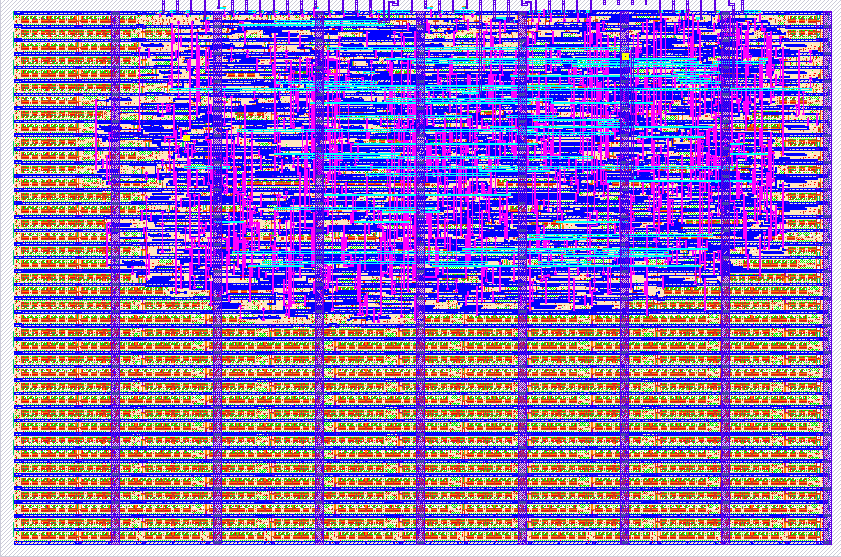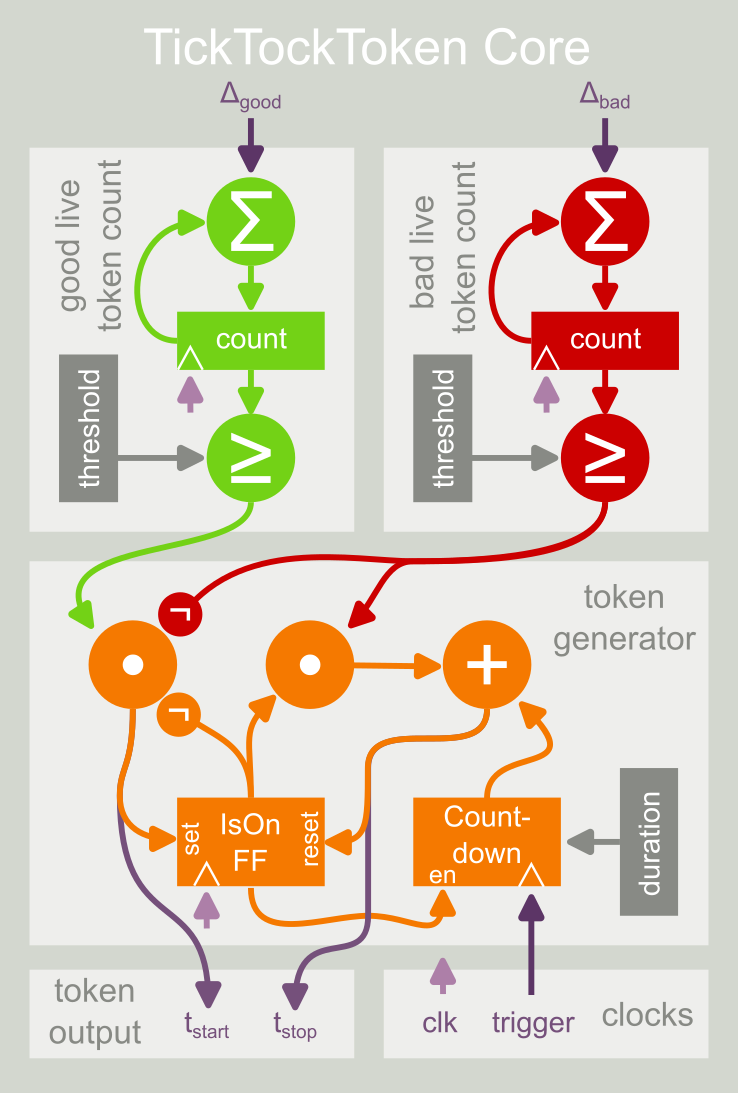7 TickTockTokens
7 : TickTockTokens

- Author: Johannes Leugering
- Description: Implementation of a processor that uses Tick Tock Tokens for event-based computation.
- GitHub repository
- Open in 3D viewer
- Clock: 10000000 Hz
How it works
Each TickTockToken (ttt) is indicated by two messages, a start and an end event. A ttt-Processor uses these tokens to perform event-based computations in a fashion inspired by Time Petri Nets.
How to test
If I didn't get lazy half-way though, the test-script provided in the repo should run a test model successfully, and the documentation should provide a more through explanation.
External hardware
arduino to generate I/O

IO
| # | Input | Output | Bidirectional |
|---|---|---|---|
| 0 | instruction bit 0 | data bit 0 | token start flag | data bit 0 |
| 1 | instruction bit 1 | data bit 1 | token stop flag | data bit 1 |
| 2 | instruction bit 2 | data bit 2 | data bit 2 |
| 3 | instruction bit 3 | data bit 3 | data bit 3 |
| 4 | (reserved) | data bit 4 | data bit 4 |
| 5 | (reserved) | data bit 5 | data bit 5 |
| 6 | (reserved) | data bit 6 | data bit 6 |
| 7 | (reserved) | data bit 7 | data bit 7 | good/bad token flag (0 = good, 1 = bad) |